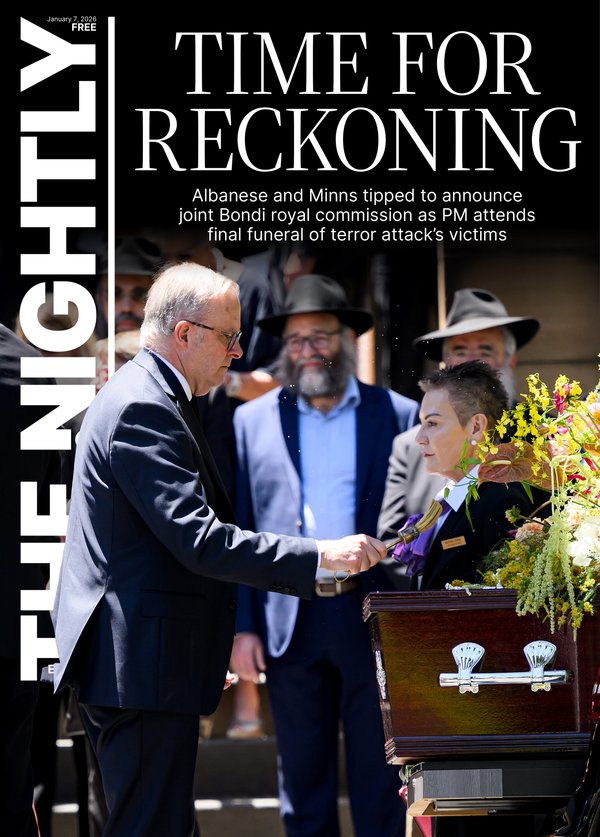THE NEW YORK TIMES: How ‘Inside Out’ and its sequel changed therapy
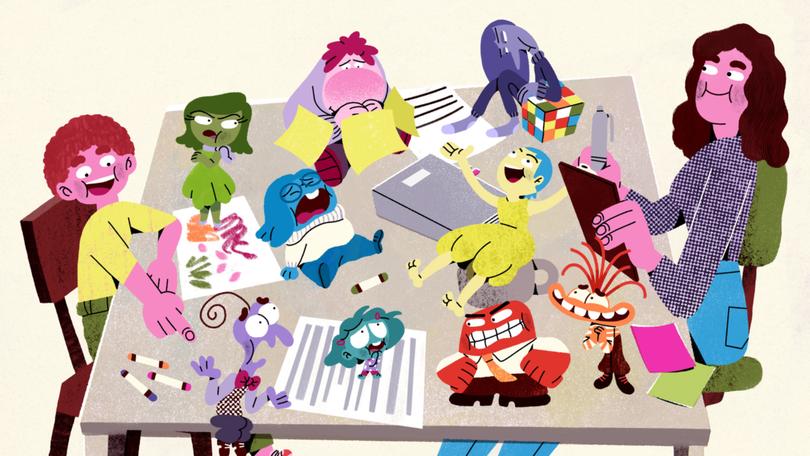
In 2012, when Olivia Carter was just starting out as a school counsellor, she employed all sorts of strategies to help her elementary-age students understand and communicate their feelings: drawing, charades, colour association, and role-playing.
After 2015, though, starting those conversations became a lot easier, she said. It took just one question: “Who has seen the movie ‘Inside Out’?”
That Pixar hit, about core emotions like joy and sadness, and this summer’s blockbuster sequel, which focuses on anxiety, have been embraced by educators, counsellors, therapists and caregivers as an unparalleled tool to help people understand themselves. The story of the moods steering the “control panel” in the head of a girl named Riley has been transformational, many experts said, in day-to-day treatment, in schools and even at home, where the films have given parents a new perspective on how to manage the turmoil of growing up.
Sign up to The Nightly's newsletters.
Get the first look at the digital newspaper, curated daily stories and breaking headlines delivered to your inbox.
By continuing you agree to our Terms and Privacy Policy.“As a therapeutic practice, it has become a go-to,” said David Langer, president of the American Board of Clinical Child and Adolescent Psychology. In his household, too: “I have 9-year-old twins. We speak about it regularly,” said Langer, who’s also a professor of psychology at Suffolk University in Boston. “Inside Out” finger puppets were in frequent rotation when his children were younger, a playful way to examine the family dynamic.
“The art of ‘Inside Out’ is explicitly helping us understand our internal worlds,” Langer said.
And it’s not just schoolchildren that it applies to. “I’ve been stealing lines from the movie and quoting them to adults, not telling them that I’m quoting,” said Regine Galanti, a psychologist and author in private practice on Long Island, New York, speaking of the new film.

Audiences have lapped it up: “Inside Out 2” has grossed more than $1.5 billion globally, shattering box office records for animation along the way.
Its influence is visible in themed bulletin boards dotting school hallways, character-based lesson plans and educators’ many DIY craft projects. There’s also the popular touring exhibition “Emotions at Play,” developed by the Children’s Museum of Pittsburgh, in conjunction with Pixar; since 2021 it has been inviting visitors to create glowing “memory spheres” or keep the “train of thought” on track. (“Core memory” is a phrase that the first movie helped introduce to the TikTok generation.)
For Carter, a national school counsellor of the year for her work at a junior high in Cape Girardeau, Missouri, “Inside Out” provided a shared language and a visual iconography that makes abstract concepts concrete.
“I have the figurines of each feeling, so students can show me who’s at the control panel,” she said. Like “Mister Rogers,” “Sesame Street” and “Daniel Tiger’s Neighborhood,” it offers a common reference point for families.
And the new movie’s focus on anxiety, which has reached crisis proportions among adolescents, normalizes experiences that for young people could seem isolating or overwhelming, and makes them relatable.
“Almost every day there’s a student who’s struggling or having a panic attack,” Carter said. “I could see this being something that I lean on pretty heavily for a long time.”
NONE OF THIS WAS the intention when the filmmakers set out some 15 years ago to make a movie with “emotions as characters, like our version of the Seven Dwarfs,” as Pete Docter, chief creative officer of Pixar and a director of the first “Inside Out,” put it in a recent video interview. At the time, he said, he “was really just thinking about animation that was exciting to me.”
But soon after the idea was born, Docter was stymied, he said, about which feelings to include; it turns out psychologists do not even have a consensus on how many there are. “Certain researchers will say that there are five emotions; others say 14,” Docter said. Dacher Keltner, a professor at the University of California, Berkeley, who served as a consultant on the movies, contends that there are 27 categories, with fuzzy boundaries.
Docter decided to approach the problem as an artist first. “I finally just said, all right, look, I’m just going to spend the weekend drawing each emotion and thinking about, as an animator, how could I make that one fun and clear?” he recalled. He settled on joy (ultimately, a glowing yellow sprite), anger (blocky red), sadness (blue skin and sweater), fear (attenuated purple) and disgust (judgmental green). Colourful graphics developed by researchers, like psychologist Robert Plutchik’s “wheel of emotions,” also helped.
Members of the Pixar brain trust got to work, plumbing, as always, their own experiences. Speaking with experts along the way, their understanding of what emotions mean shifted. “I always thought anger is just something that I regret later, that gets me in trouble — road rage or whatever,” Docter said. “And then you realize, oh, no, it’s about fairness.”
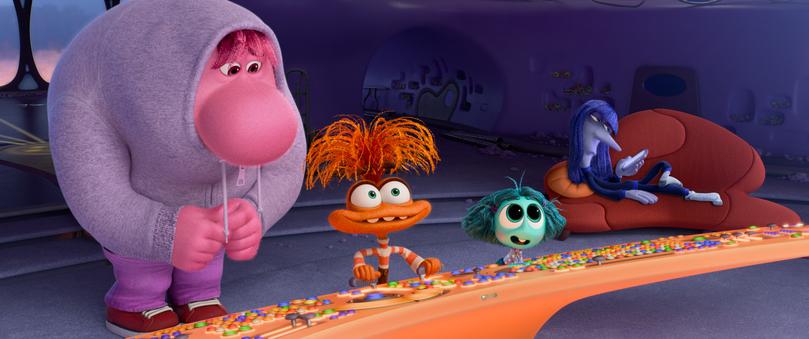
Meg LeFauve, who co-wrote both films, said: “I remember I was taught as a kid not to be jealous. But the truth is, jealousy and envy, they’re telling you what you want. And that’s incredibly important to note, especially for women.”
All of that helped them conceptualize one thing mental health professionals love about the films: that they don’t villainize any feelings. In the first movie, the leader, Joy (voiced by Amy Poehler), finds space for Sadness (Phyllis Smith), as 11-year-old Riley adjusts to her family’s move from Minnesota to San Francisco. In “Inside Out 2,” Riley is freshly a teenager, and new emotions like Embarrassment, Envy and Ennui flood her system. Anxiety (Maya Hawke), orange and wild-haired, rejiggers Riley’s sense of self.
The movies “treated those uncomfortable emotions as factory settings that are necessary to overall health,” said Lisa Damour, a leading adolescent psychologist, author and speaker who served as a consultant on the second film, and who has written for The New York Times.
That Anxiety can be protective — she’s useful and means well, even if she’s occasionally on overdrive — is a key lesson imparted by the sequel. And it runs counter to the prevalent idea that we should lead fret-free lives, Damour said, adding, “I cannot tell you how common it is for kids or parents to come to me saying, in a fearful voice, ‘I think I have anxiety,’ and how frequently I need to say, well, of course, you do. It’s how you’ve survived to this point.
“Psychological distress, on its own, is not grounds for concern,” she added. “What we care much more about is the quality of coping.”
SHAPING THAT into a story that was entertaining and not a therapy session was the challenge for the filmmakers, especially after the first movie resonated in ways they didn’t expect.
LeFauve, who along with her co-writers was nominated for an Oscar, recalled a Los Angeles psychiatrist approaching her at an awards ceremony after the first film. Her work involved helping children process traumatic events the night they experienced them, and she told LeFauve, “You made my job so much easier.”
“It got me very choked up,” LeFauve said. “Who needs an Academy Award? Honestly, to create something in the world that can be used for children in a moment of trauma is amazing.”
But the filmmakers all said that while they were conscious of the real-world stakes for the sequel, they tried not to focus on them. (The movies’ mental health consultants didn’t read scripts; they gave feedback on clips once animation was in process.) You “don’t want to trip over the science and not deliver a story,” said Dave Holstein, one of the screenwriters.
In his first outing with a Pixar film, he was guided by something Joey Mazzarino, a head writer of “Sesame Street,” told him when they worked together on Holstein’s series “Kidding”: “Every pain needs a name.”
Visualizing a problem as a character makes it “much easier for a kid to talk directly to their pain,” Holstein said.
Those techniques also came from the writers’ own depths.
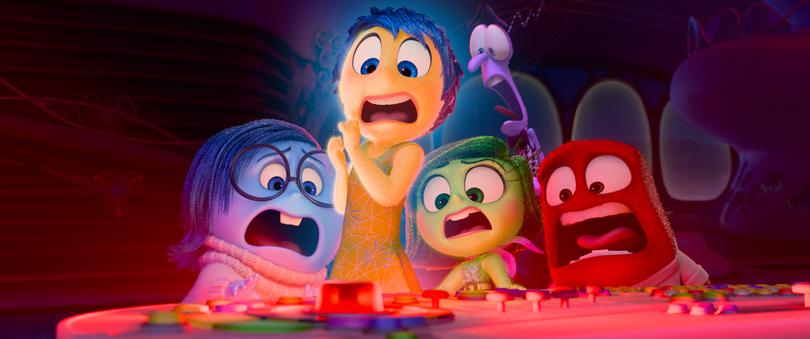
When, toward the end of the film, Anxiety is exiled to a chair and ordered to worry about a Spanish test instead of a whole unknown future, that’s a LeFauve specialty.
“I’ve been doing that my whole life,” she said. “I’m anxious to go into a meeting. I will say, thank you, anxiety, I know you’re trying to save me; I hear you, but please take a seat. I’m not going to die; it’s OK. And then give her a job.”
One standout scene involves Riley, after a bad play in ice hockey camp, having a panic attack — hardly typical fare for a Disney movie, but common nonetheless, including for young children, experts said. As Anxiety is both whirling out of control and frozen, crying, in her head, Riley brings herself out of the spiral. There’s a shot of sunlight streaming into the rink, the tap of a stick on a puck.
“We know panic attacks, they typically crest and then they fall,” said Galanti, the therapist. “One technique is to, mindfully, pay attention to the things around you” — the perception of sights, sounds and more that helps people recenter themselves. That’s what Riley does. And, Galanti noted with approval, she went back on the ice afterwards, showing that her nerves were not in charge and that she could still do the things she loved.
“Motivation becomes such an important piece, because why would anyone want to do the things that make them anxious?” Galanti, who specializes in adolescent anxiety, said. “So anything to help with motivation is huge.”
The sequel benefited from a new openness in addressing mental health and emotional well-being that the first movie helped spur. When Riley, in the original movie, tells her parents, “‘You want me to be happy, but I’m not’ — that was what I wanted to say to my parents when I was 11 but I didn’t have the courage,” said LeFauve, who described herself as a moody child. “But I’ll tell you, in the premiere of that movie, my 12-year-old leaned over and said, ‘Well, I sure know what she’s talking about.’”
“INSIDE OUT” ARRIVED at a moment when educators and caregivers were paying more attention to what’s known as social-emotional learning, prioritizing connection and communication skills, and recognizing, not tamping down, children’s sensibilities as part of their self-regulation.
It’s a huge generational shift in schooling — “I’m 35; I don’t think we ever spent time feeling our feelings,” said Carter, the school counsellor — and it was both reflected in “Inside Out” and fueled by it: a cultural feedback loop.
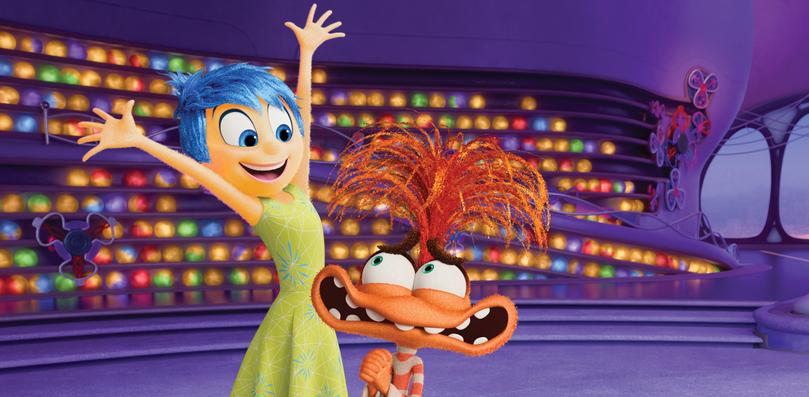
For the first screenplay, LeFauve lifted a moment straight out of her children’s preschool, when a teacher mirrored back a student’s melancholy (“you feel sad”), putting her hand over his with compassion. In the movie, Sadness does the same for Riley’s imaginary friend.
Acknowledging feelings “is like a magical thing,” Damour, the adolescent psychologist, said. “If a person says, ‘I feel sad,’ they suddenly feel less sad.”
That “Inside Out” helps families have those conversations together amplifies one of its messages, to embrace our personalities in all their shades and shadows.
Anne Fullenkamp, senior director of creative experiences at the Children’s Museum of Pittsburgh, witnessed it, because its exhibition — like the movies — appeals to both children and grown-ups. They would stand together at the control panel, weighing how to balance their sentiments.
“You see parents and caregivers getting very emotional,” she said. “They’re getting in touch with things they hadn’t thought of in a long time — and their kids help them navigate it and get there.”
This article originally appeared in The New York Times.
© 2024 The New York Times Company
Originally published on The New York Times
